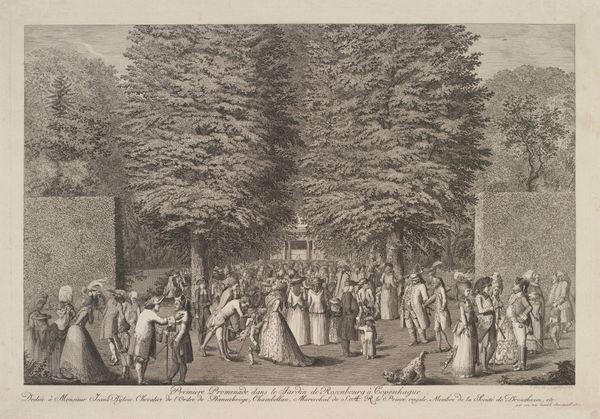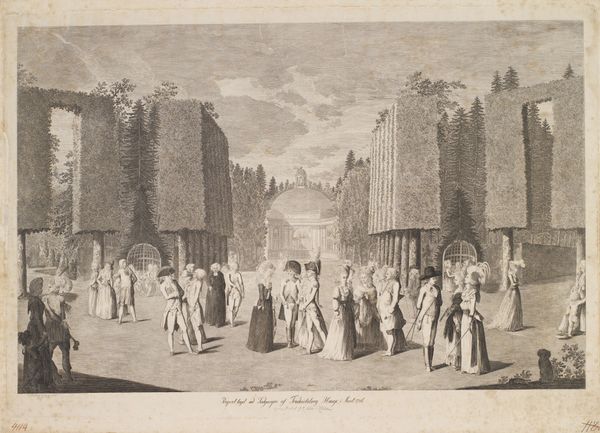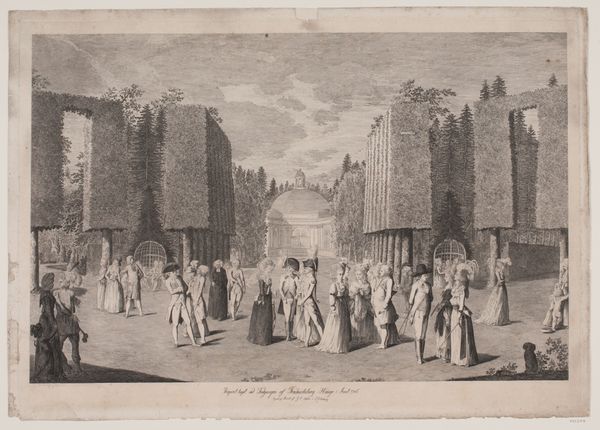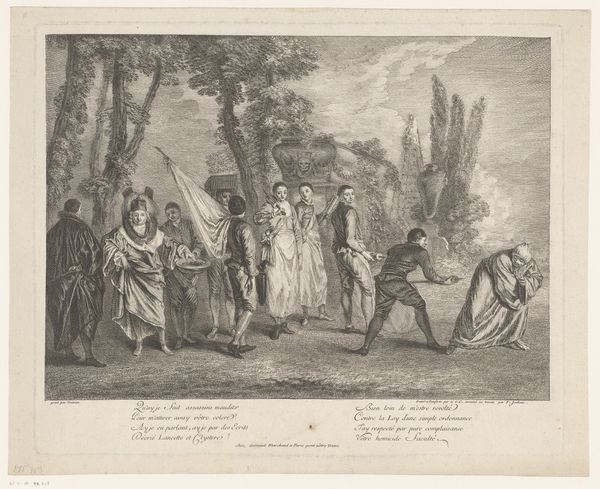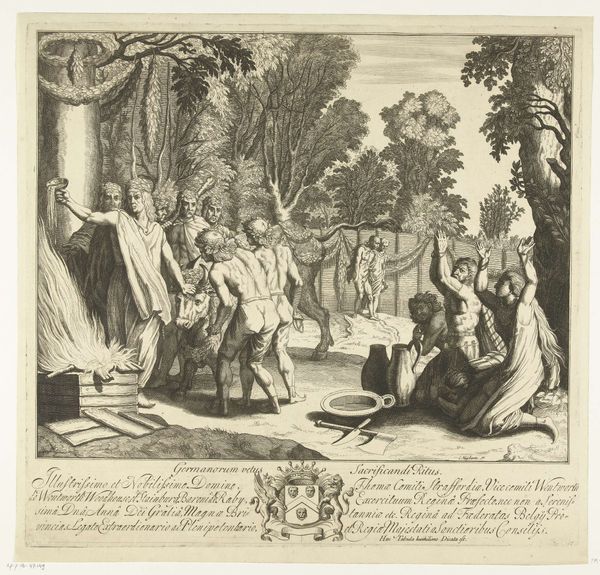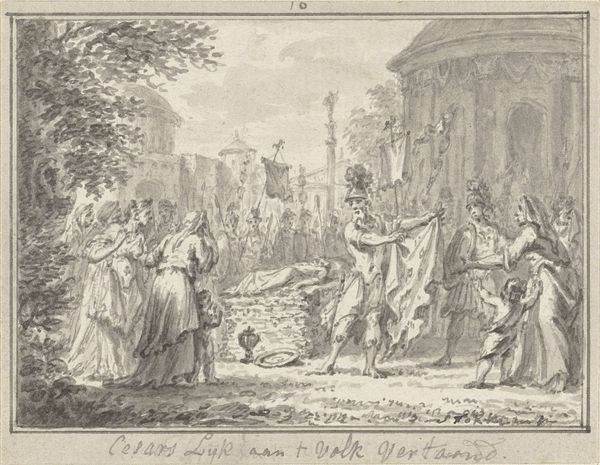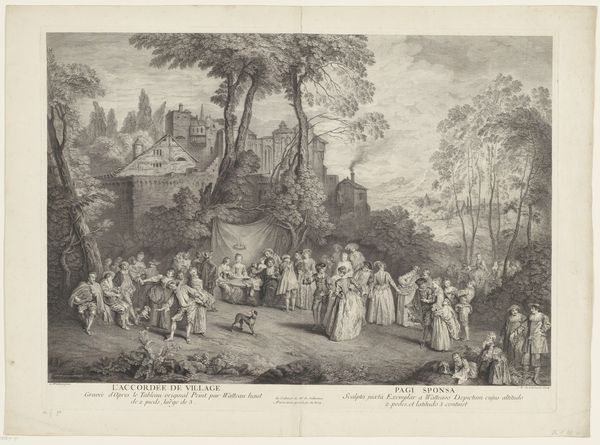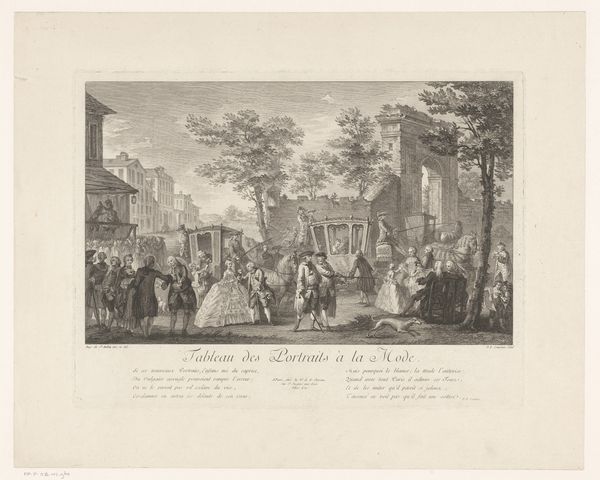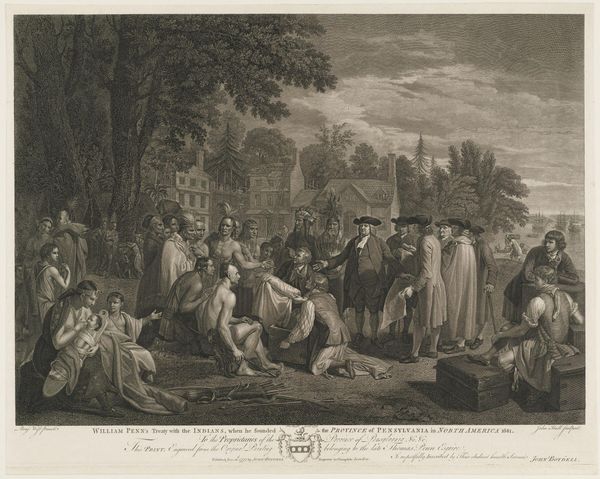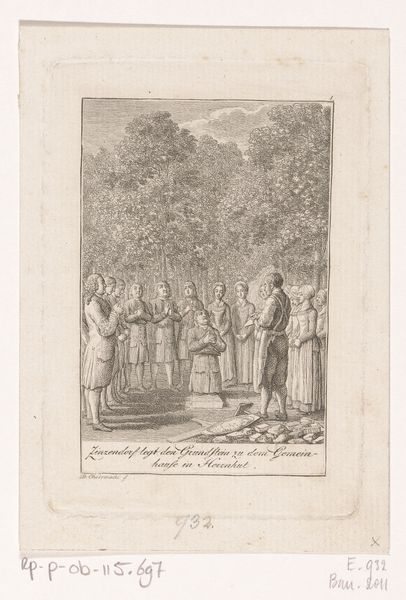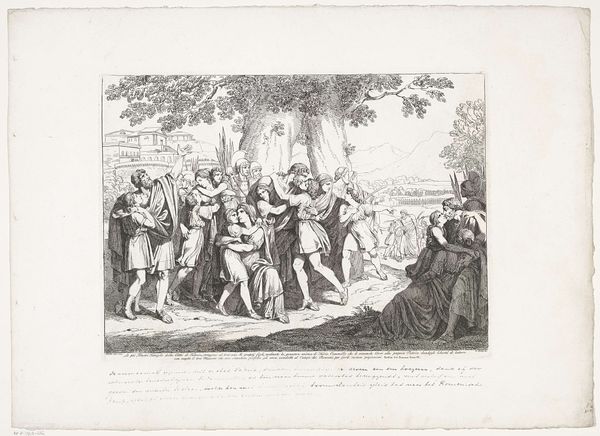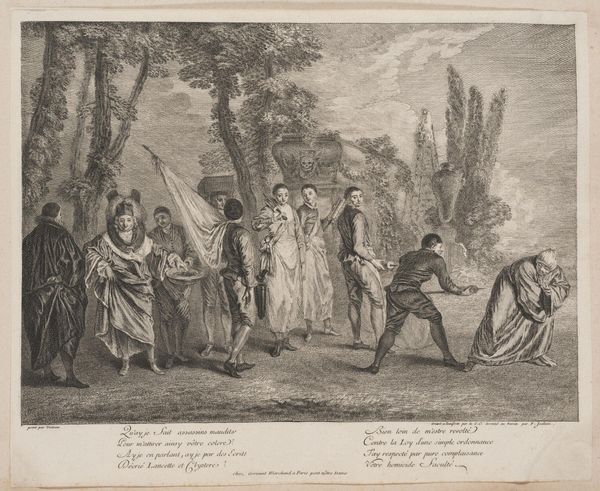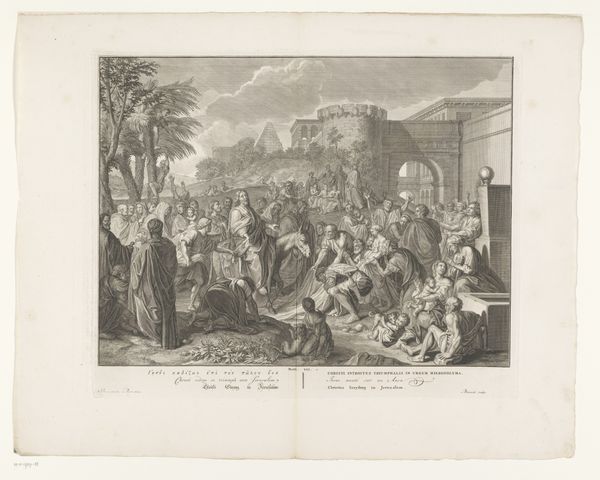
Premiere promenade dans le Jardin de Rosenburg à Copenhauge 1785
0:00
0:00
print, engraving
#
neoclacissism
# print
#
old engraving style
#
landscape
#
genre-painting
#
engraving
Dimensions: 361 mm (height) x 520 mm (width) (bladmaal)
Curator: This is "Premiere promenade dans le Jardin de Rosenburg à Copenhague," or "First Walk in the Rosenborg Garden in Copenhagen," by Georg Christian Schule, an engraving dating to 1785. Editor: My immediate reaction is that this scene appears carefully staged, even for its time. The crispness of the engraving lends it a documentary feel, almost like an invitation or record of social engagement in the gardens. Curator: Exactly. Schule's print shows us a specific instance of manufactured leisure, part and parcel of the Danish elite's engagement with nature and class identity. The formal garden serves as the backdrop for interactions that reinforce social hierarchies, which would then have been traded and consumed via printed images such as these. Editor: We should also note how labor comes into play with engravings like this, because they would often be distributed widely to disseminate political and cultural agendas, impacting public perception of elite pastimes and gender roles, with particular implications for consumption and performativity. How aware was Schule of his role within such a system? Curator: Schule, as a craftsman and entrepreneur, understood the marketplace. The labor he exerted contributed to a system where luxury goods, like the gardens themselves, signified prestige. This isn't just a snapshot; it’s a crafted image playing a part in a bigger social game. The very act of creating and circulating these engravings bolsters social structures. Editor: And look at the details – the arrangement of figures and clothing styles, their positioning in relation to each other – it tells a tale of who has power, who is displaying wealth, and how deeply intertwined class, gender, and power were in 18th-century Danish society. I wonder about those excluded: who maintained the grounds, for instance, enabling these promenades to happen. Their presence, or rather absence, is deeply felt. Curator: Those are important layers. Looking at the materials, engraving itself becomes part of this social story—the copper plate, the ink, the press. Its relative affordability compared to paintings facilitated broader distribution. The choice of the engraving is central in analyzing its importance and impact. Editor: I concur completely. Reflecting on this engraving, I'm struck by the layered meanings and its relationship to our own social landscapes. These manufactured moments echo through time, compelling us to confront inequality even today. Curator: Agreed. The image itself as object allows for such discourse.
Comments
No comments
Be the first to comment and join the conversation on the ultimate creative platform.
